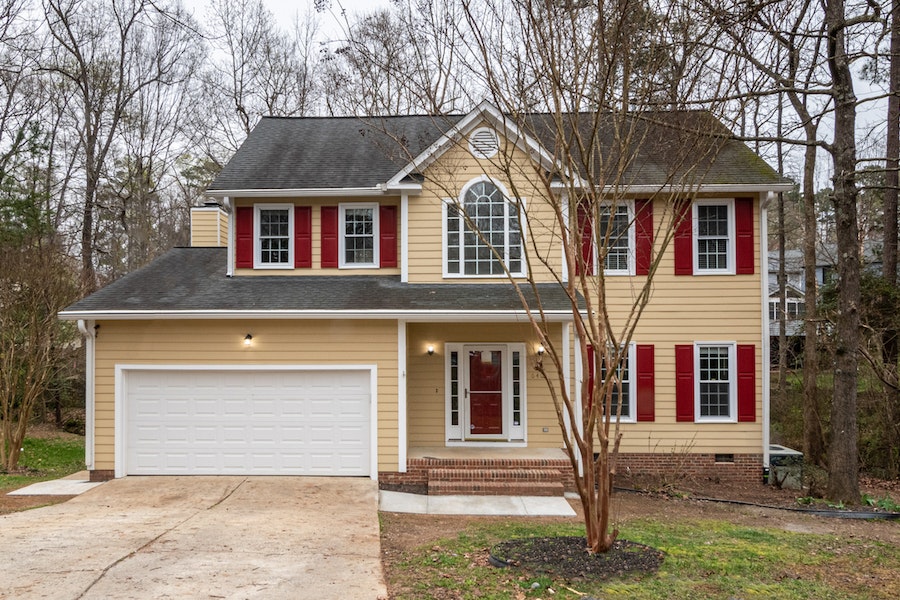5 Tips For Repairing Your Garage Door After Storm Damage
Share

When a powerful storm strikes, it can leave a trail of destruction in its wake. This includes damage to your home and property.
As reported by Al Jazeera, hurricane Idalia recently left a trail of devastation all across the southeast US. With wind speeds of up to 125 miles per hour, the hurricane ripped through everything in its way. Looking at the recent photos coming out of this part of America will show you just how devastating the situation is right now. The damage to people’s houses is particularly noticeable.
One area that is particularly vulnerable to storm damage is your garage door. Strong winds, flying debris, and heavy rain can wreak havoc on your garage door, leaving it in need of repair. To help you navigate the process of repairing your garage door after storm damage, we’ve compiled a list of five essential tips.
#1 Assess The Damage First
Before you jump into repairing your garage door, take some time to assess the extent of the damage. Stand back and visually inspect the door, looking for obvious signs of damage such as dents, cracks, or misalignment.
Pay close attention to the tracks, springs, and rollers, as these components are crucial for the door’s operation. Look for any bends, breaks, or misalignments. It’s essential to have a clear understanding of the damage before you start the repair process. This will help you determine whether you can handle the repairs yourself or if you need to call in a professional.
According to the Atlantic Ocean Group, garage repair jobs might seem simple at first, but they are actually quite complicated. If the damage is too severe, you might struggle to fix it on your own. That’s why you should always assess the garage door damage first and decide whether or not you can fix it by yourself.
#2 Prioritize Your Safety
Safety should always be your top priority when dealing with garage door repairs, especially after storm damage. Keep in mind that garage doors can be heavy and operate under tension, so mishandling them can lead to serious injuries.
Start by disconnecting the garage door opener to prevent any accidental openings while you’re working on it. Ensure that the door is fully closed and secured in place. If you suspect that any parts of the door or its components are seriously damaged or compromised, do not attempt to repair them yourself. Instead, call a professional garage door technician who has the experience and equipment to handle the job safely.
According to Forbes, garage door repairs cost between $150 and $375 on average. It’s money well spent, given that your safety might be on the line.
#3 Replace Damaged Panels
If your garage door has sustained damage to its panels, replacing them may be necessary. Start by identifying the specific panels that need replacement. Garage door panels are typically held in place with brackets or hinges, which can be removed to free the damaged panel. Take careful note of how the panels are attached before removing them to make reinstallation easier.
When purchasing replacement panels, make sure they match the style and color of your existing door. You can usually find replacement panels from the door’s manufacturer or a local garage door supplier. Once you have the replacement panels, follow the manufacturer’s instructions for installation. You should also take this opportunity to storm-proof your garage to avoid serious damage in the future.
Livingetc recommends you install hurricane panels to storm-proof your garage. These panels are particularly useful if you’re living in a storm or hurricane-prone area. These panels are basically corrugated sheets. When placed in front of the garage door, they can prevent severe storm damage.
#4 Address Track And Roller Issues
Storm damage can often affect the garage door’s tracks and rollers, causing them to become misaligned or damaged. Examine the tracks for bends or gaps. If you find any, you can simply use a rubber mallet to gently tap the track and realign.
After that, inspect the rollers for damage or wear. Rollers should move smoothly along the track. Any sort of roughness or resistance is a sign that they need to be replaced.
Replace the damaged rollers by removing the brackets that hold them in place and sliding the new rollers into position. Then, lubricate the rollers and tracks using a silicone-based lubricant. This will let you smoothly operate the garage doors.
#5 Take A Closer Look At The Springs
Garage door springs are under extreme tension and are essential for lifting and lowering the door safely. After a storm, it’s essential to inspect the springs for any signs of damage or wear. Look for rust, cracks, or gaps in the springs, as these can weaken them and lead to failure. Fully replace the garage springs if the existing ones are too damaged.
If you’re experienced with garage door repairs and feel comfortable working with high-tension springs, you can replace damaged springs yourself. However, due to the potential dangers associated with spring replacement, it’s often best to leave this task to a professional technician. They have the knowledge and tools to safely replace the springs and ensure your garage door operates correctly.
Conclusion
If your garage door is damaged after a storm, it’s important to get it fixed as soon as you can. Otherwise, you run the risk of potential damage inside the garage as well as theft. Thus, anytime you notice such damage, don’t delay the repairs. If you need, don’t hesitate to turn to these tips to seek a bit of guidance.













